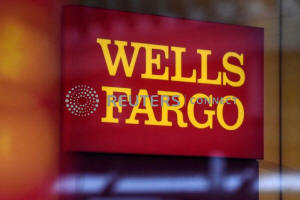Exclusive: Wells Fargo lays off more than 200 business
bankers in U.S. - sources
 Send a link to a friend
Send a link to a friend
 [October 26, 2019] By
Imani Moise and P.J. Huffstutter [October 26, 2019] By
Imani Moise and P.J. Huffstutter
(Reuters) - Wells Fargo & Co <WFC.N> has
laid off more than 200 bankers in its U.S. lending divisions in recent
months, as the bank reacted to business trends and restructured some
units, sources familiar with the matter said this week.
Most of the cuts were in Wells Fargo's commercial bank and many impacted
its team that gives loans to farmers. The bank has also made cuts to its
energy lending group. Energy and agriculture are two portfolios in which
the company is traditionally strong.
The fourth-largest U.S. lender by assets cut the unit that specializes
in agricultural lending by at least 25%, according to four sources with
direct knowledge of the matter.
Representatives for Wells Fargo confirmed the cuts but did not elaborate
on how many agricultural bankers were laid off.

Over the summer, 22 bankers were axed from its energy team, according to
two other sources. The cuts represented about 7% of the energy group, a
spokeswoman said.
The energy lending team sits within the investment bank and the
agriculture group is part of commercial banking. The company has about
6,000 commercial bankers in the United States.
Many of the agriculture cuts were concentrated in rural areas, one
source told Reuters, including North Dakota and South Dakota where staff
was cut in half. Wells Fargo plans to create a smaller group of
agricultural bankers in one of its new centralized hubs who will work
with customers, the person said.
While the move marks Wells Fargo’s latest bid to centralize operations
and shed risk, the move comes as a blow to energy companies and
increasingly cash-strapped farmers.
With fewer bankers on hand in local markets, some small companies and
family farmers will likely need to find a new lender, said three sources
familiar with the businesses.
The staffing cuts are particularly ill-timed for the bank’s soybean,
corn and grain farm customers, who are looking to renew loans to finance
their spring planting operations.
Wells Fargo is the biggest bank lender to the U.S. agriculture sector,
according to the American Bankers Association. An Wells Fargo executive
told Reuters the bank intends to retain that position and there has been
no strategic move to reduce exposure. The moves were made because the
commercial bank wants to align resources to better serve clients who do
more business with the bank.
[to top of second column] |

A Wells Fargo logo is seen in New York City, U.S. January 10, 2017.
REUTERS/Stephanie Keith

The bank is currently hiring agricultural bankers in markets like California,
Wyoming and Idaho, a bank spokeswoman said. After the hires the total reduction
to the team will be 5%.
SCALING BACK
Federal data analyzed by Reuters shows Wells Fargo is following other large U.S.
banks in scaling back exposure to farmers. The bank’s Federal Deposit Insurance
Corporation (FDIC)-insured units have pared $1.24 billion, or 15.3%, of their
farm-loan holdings between the end of December 2016 and June 30 of this year,
according to the most recent data from the regulator.
Wells Fargo has also been traditionally regarded as one of the most active
lenders to the U.S. oil and gas sector. But its energy team was still recovering
from hefty losses it booked in 2016, when crude prices plunged to $26 a barrel
and forced a number of bankruptcies in the sector. (https://www.reuters.com/article/us-wells-fargo-energy-idUSKCN0XA09K)
The unit created a separate credit resolution group to try to work with
customers to stem the losses. Since then the bank has disbanded its Energy
Capital Group and put less emphasis on lending, two of the sources said.
Another Wells Fargo spokeswoman, Hannah Sloane, said the bank remains committed
to the sector and has expanded the business over the past three years.
“We regularly review and evaluate the needs of our clients and the dynamics in
the markets we serve in order to ensure we align our resources accordingly," she
said.
Wells Fargo has been working to centralize operations to improve risk controls
since 2016, when a wide-ranging sales practices scandal erupted and placed the
bank under a regulatory microscope. The Federal Reserve has prevented the bank
from increasing its balance sheet until it believes it has made significant
changes to its risk management and compliance structures.
Revenue in Wells Fargo's wholesale bank, which houses the merged banking unit,
has fallen every year since the scandal and fell another 2% during the first six
months of 2019. The unit has had some trouble attracting new business in the
wake of the scandal, Reuters has reported.
(Reporting by Imani Moise in New York and P.J. Huffstutter in Chicago; Editing
by Matthew Lewis)
[© 2019 Thomson Reuters. All rights
reserved.] Copyright 2019 Reuters. All rights reserved. This material may not be published,
broadcast, rewritten or redistributed.
Thompson Reuters is solely responsible for this content. |